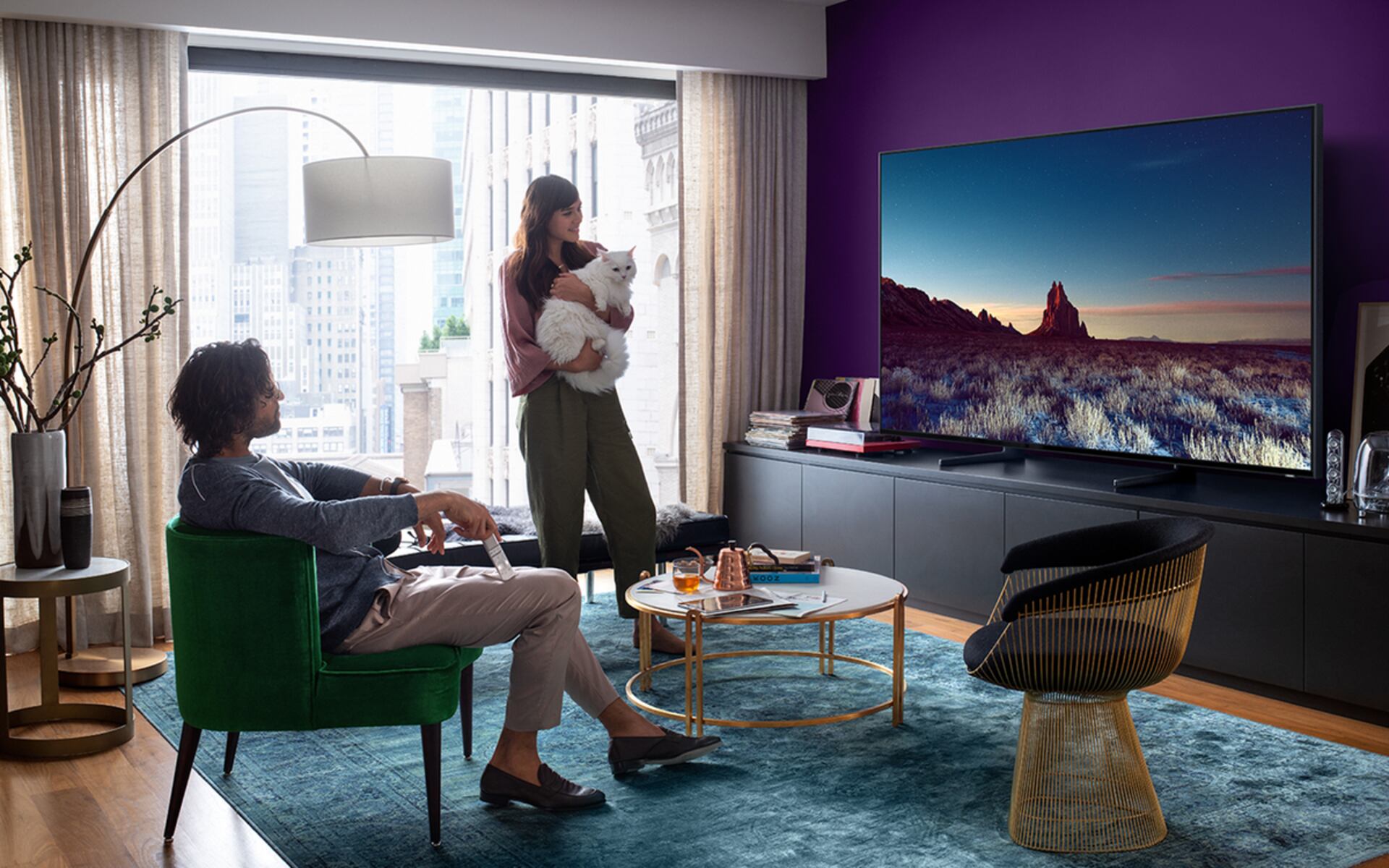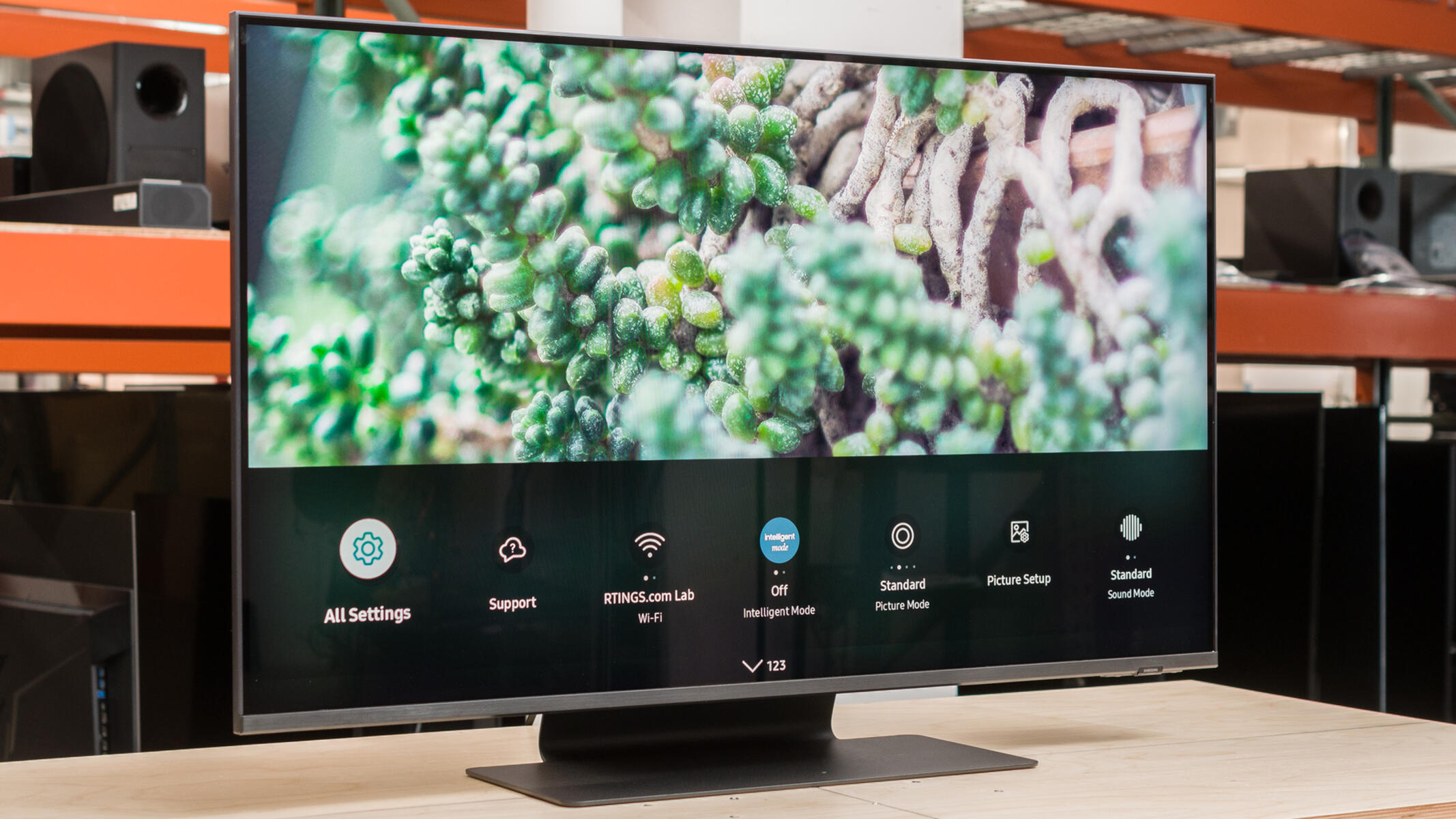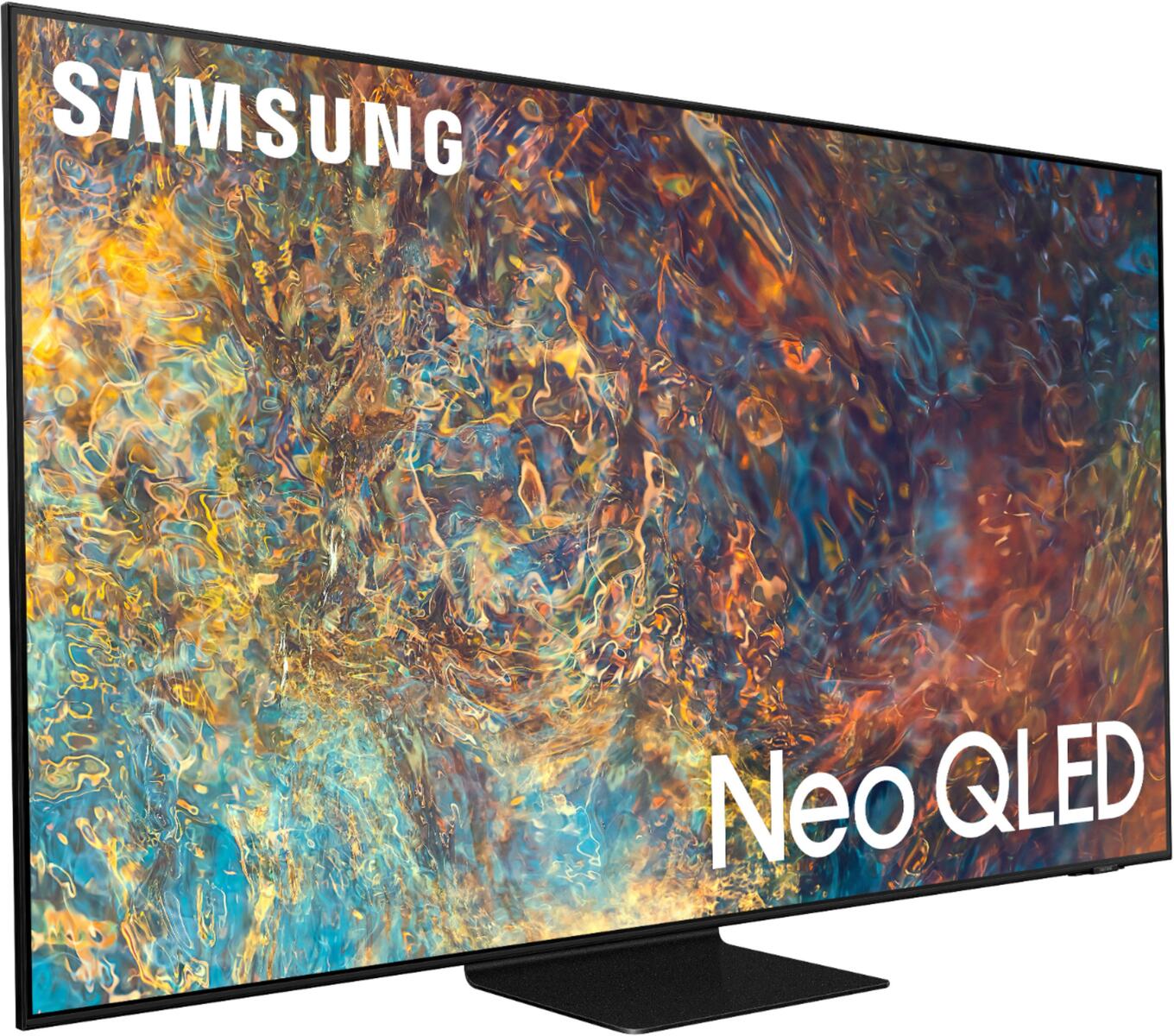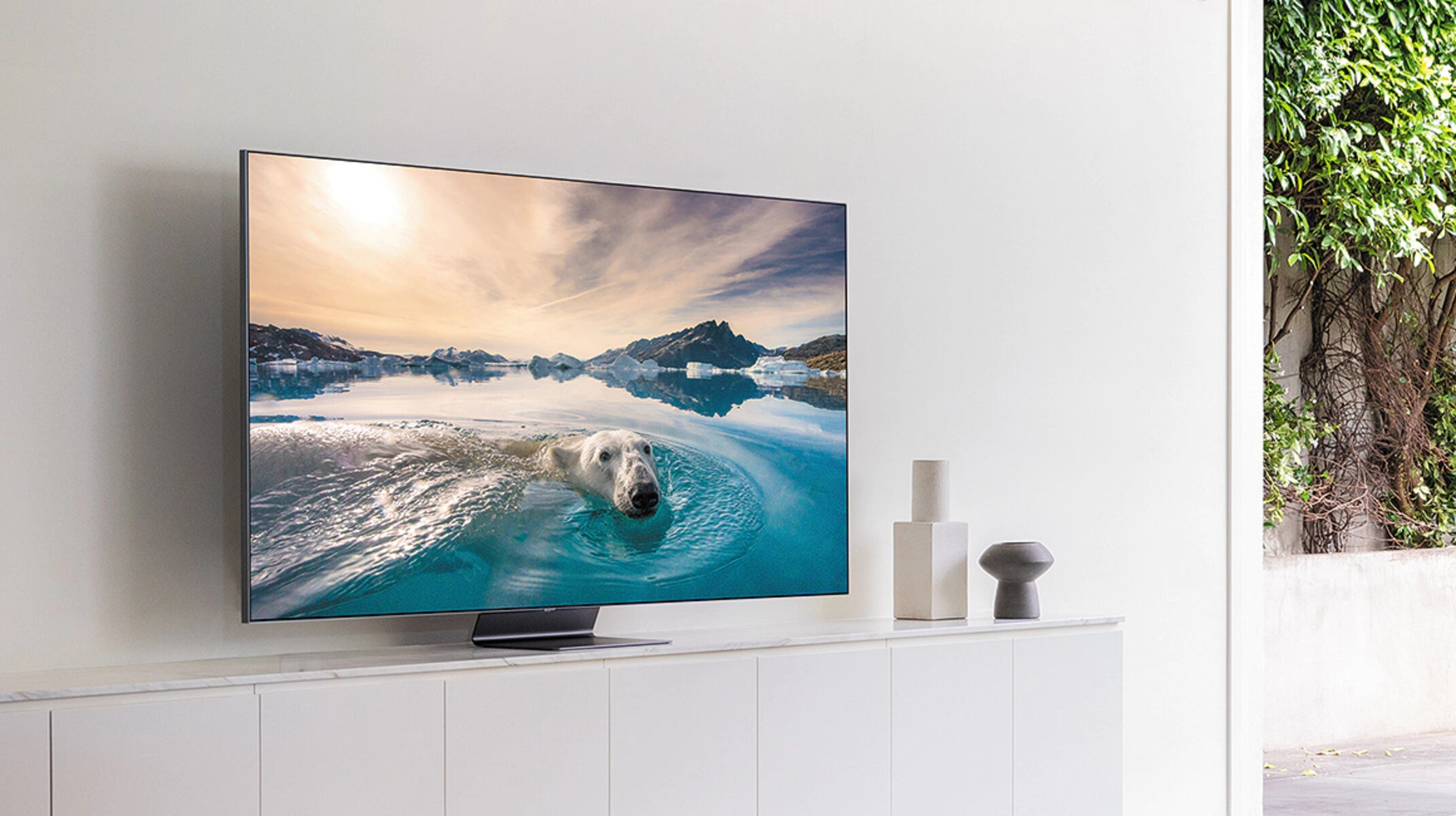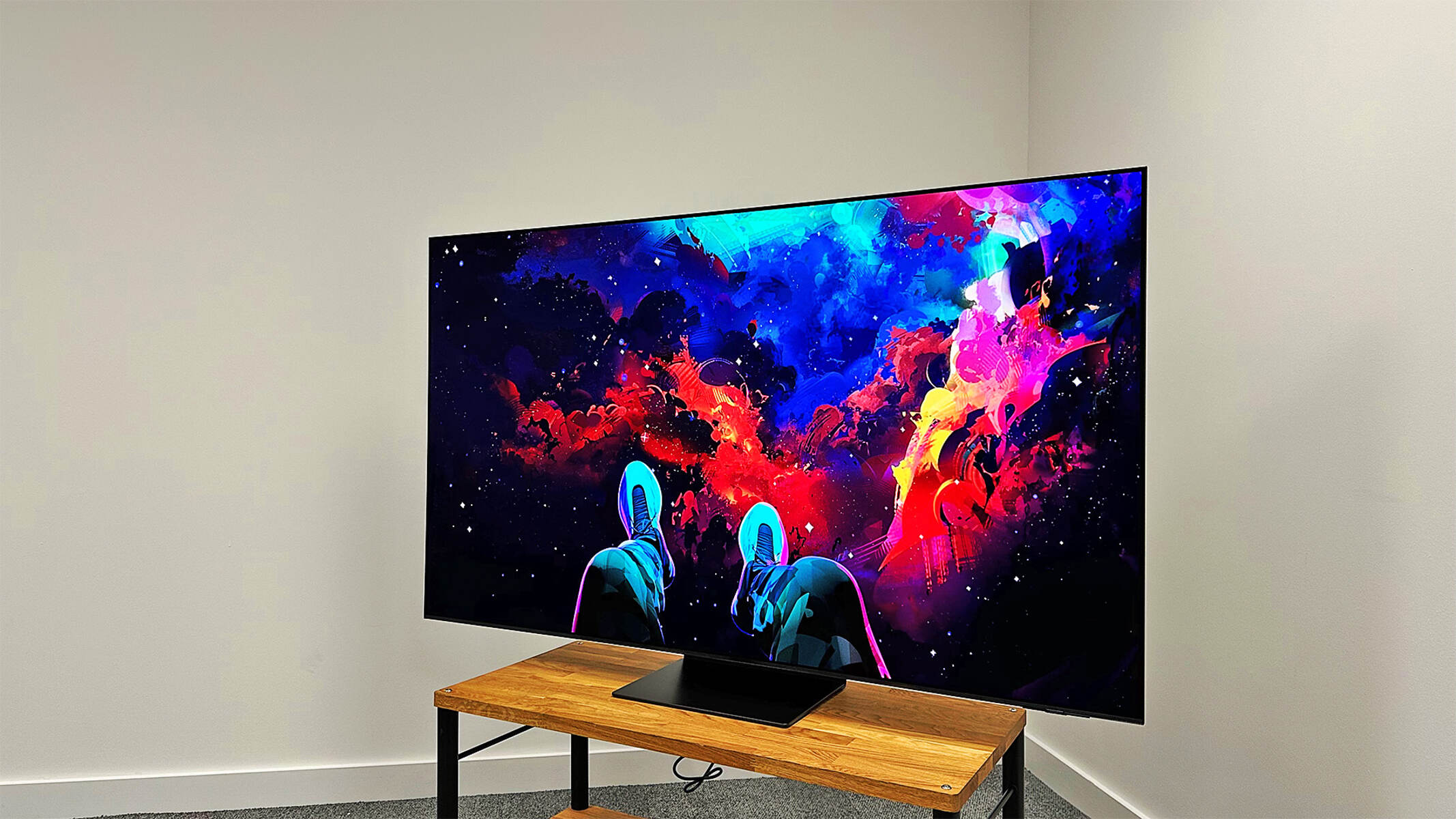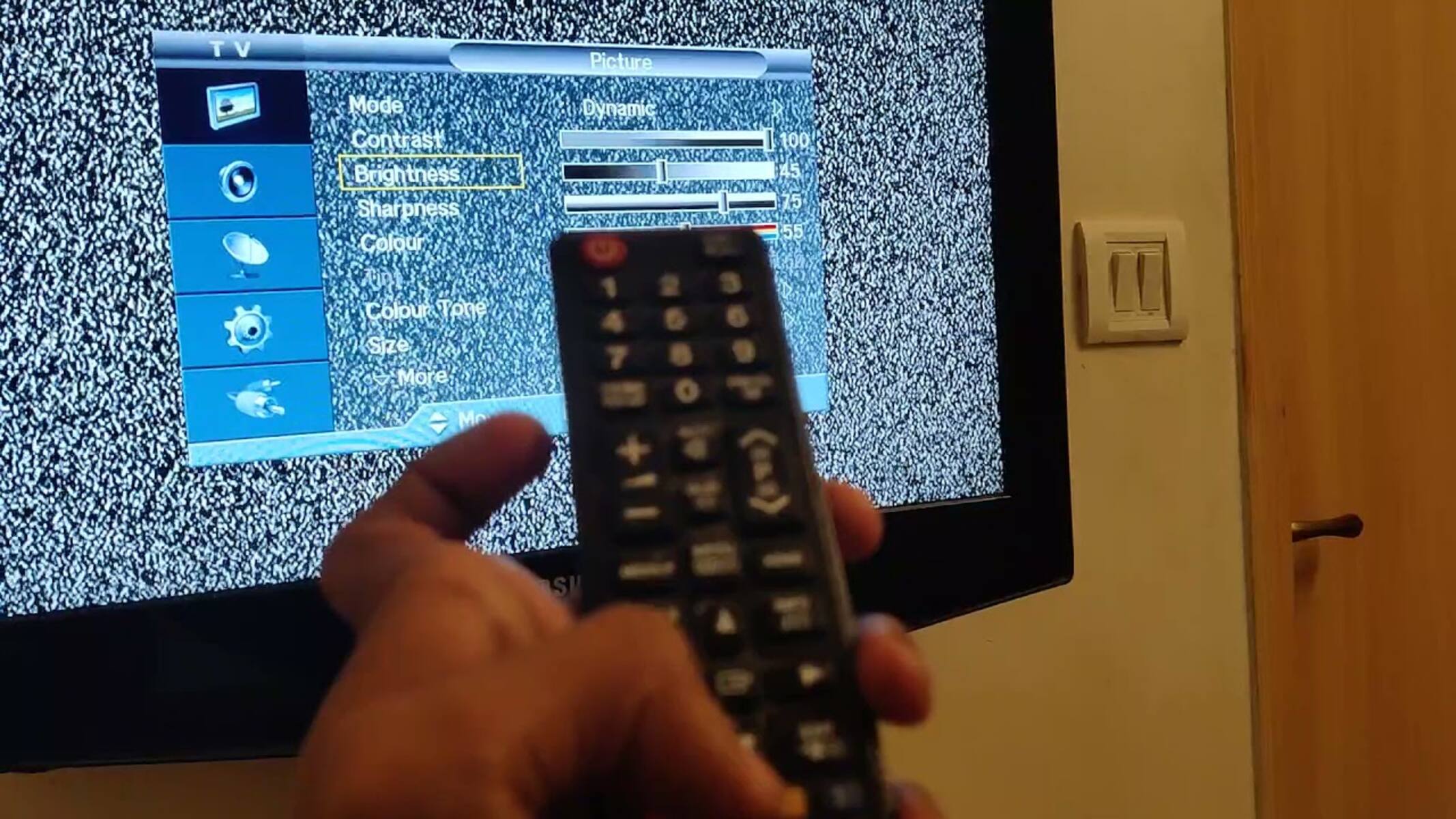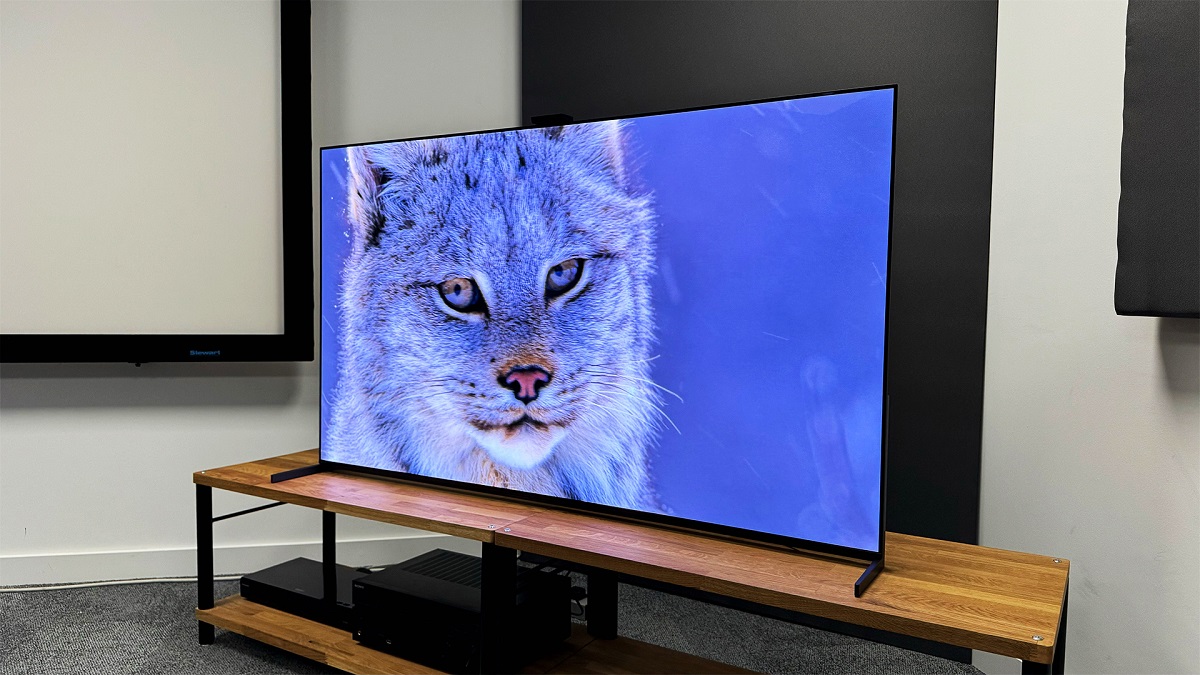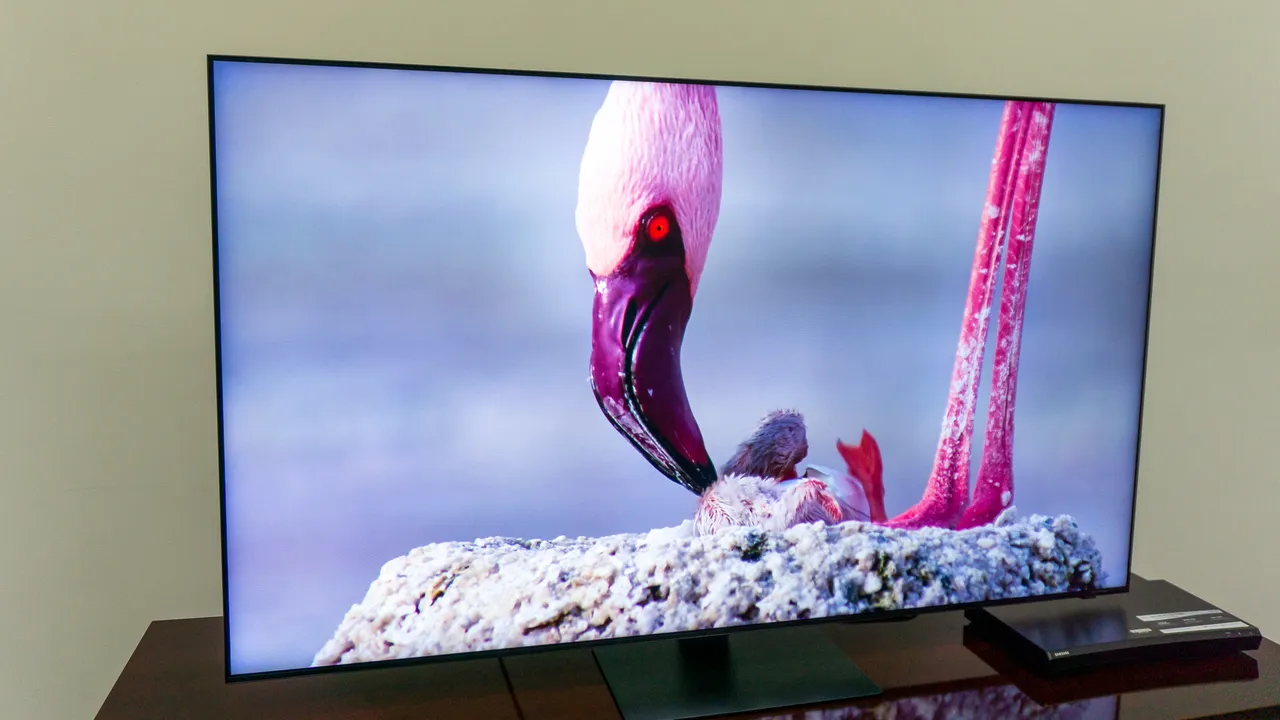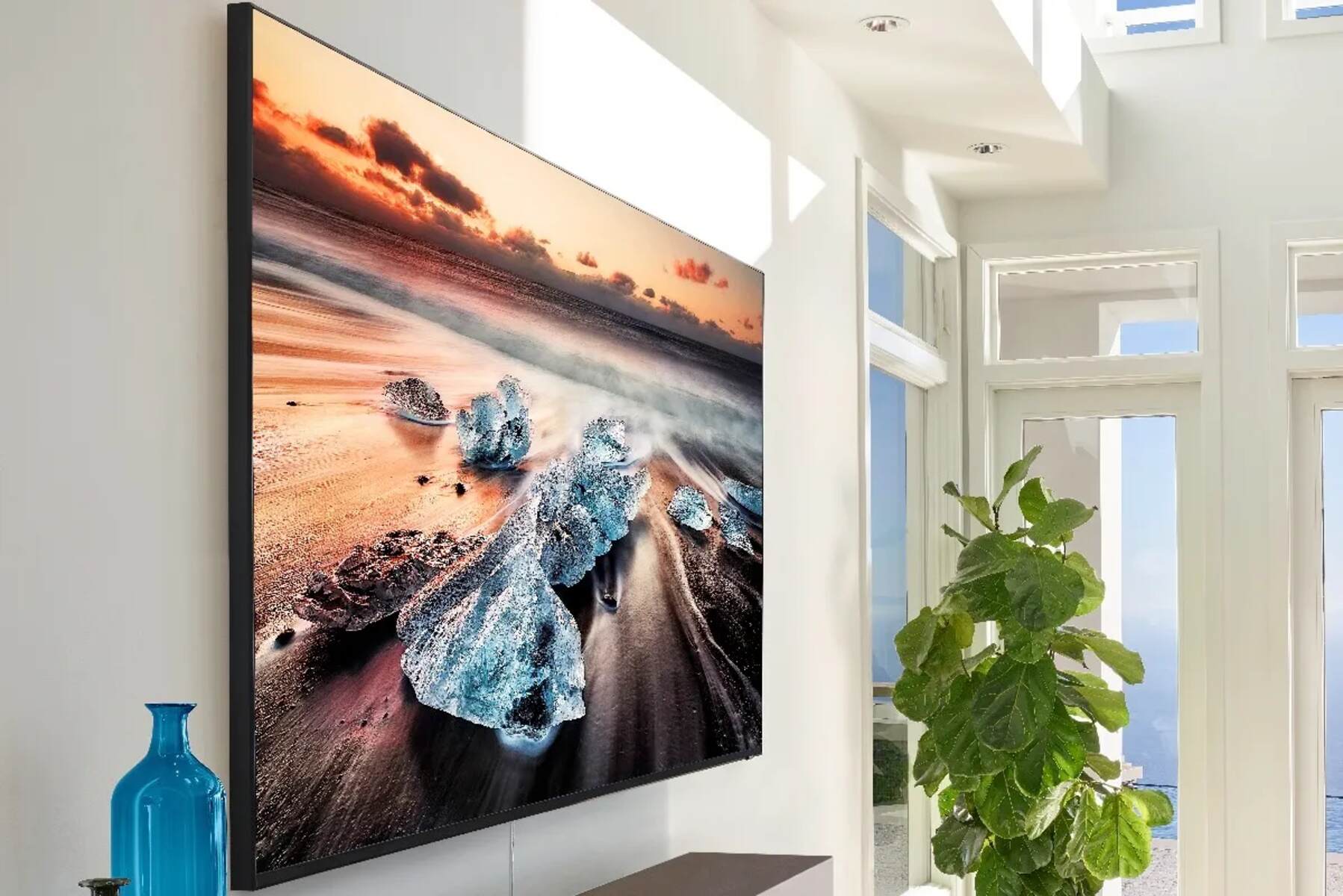Introduction
Welcome to the world of Samsung QLED TVs, where breathtaking picture quality meets cutting-edge technology. Whether you’ve just unboxed your new QLED TV or have been enjoying its stunning visuals for a while, finding the best picture settings can take your viewing experience to the next level. With the multitude of picture modes and various settings available, it can be overwhelming to figure out which combination will give you the most vibrant colors, sharp details, and immersive visuals.
In this article, we will explore the different picture modes available on Samsung QLED TVs and guide you through the optimal settings for each mode. Whether you’re a movie enthusiast, a gamer, or simply love to watch your favorite shows in the best possible quality, we’ve got you covered. By fine-tuning your QLED TV’s picture settings, you can ensure that every scene comes to life with vivid colors, deep blacks, and stunning contrast.
Before we dive into the specifics, it’s important to note that the best picture settings will ultimately depend on your personal preferences and the viewing environment. Factors such as room lighting, content type, and personal taste can all play a role in determining your ideal picture settings. Therefore, consider this article as a helpful starting point that you can customize based on your preferences.
Now, let’s explore each picture mode and the recommended settings to help you make the most of your Samsung QLED TV and elevate your viewing experience to new heights.
Standard Picture Mode
The Standard Picture Mode on your Samsung QLED TV is designed to provide a balanced and natural image quality. This mode is well-suited for most viewing scenarios, from watching movies and TV shows to playing video games. By default, the settings in Standard Mode aim to deliver a picture that closely resembles the content as it was intended to be seen.
When you enter the Picture settings menu, select the Standard Picture Mode and let’s begin optimizing the settings.
First, let’s start with the Backlight settings. The backlight controls the brightness of the entire screen. Adjusting this setting to your preference is crucial, as it affects the overall picture quality. If you find the screen too bright, lower the backlight. On the other hand, if the screen appears too dim, increase the backlight. Aim for a level that is comfortable for your eyes and provides good visibility.
Next, we move on to Contrast settings. This setting determines the difference between the lightest and darkest parts of the image. Set the contrast level to a value that preserves details in both bright and dark areas. Be cautious not to overdo it, as excessive contrast can result in loss of detail or a washed-out look.
Adjusting the Brightness settings is essential for achieving optimal black levels. Increasing the brightness can enhance shadow details, while decreasing it can make blacks look deeper. Find a balance that maintains dark scene details without sacrificing overall brightness.
Now, let’s focus on the Color settings. This setting allows you to adjust the intensity and saturation of colors. Aim for a natural and balanced color reproduction by avoiding overly vibrant or dull colors. Adjust the color setting until the colors on the screen look realistic and pleasing to your eyes.
Sharpness settings control the level of sharpness or clarity in the image. Be careful not to set it too high, as it can introduce artificial-looking artifacts and reduce the overall quality of the picture. Adjust the sharpness setting to find a balance that enhances details without producing unwanted artifacts.
In Standard Mode, Local Dimming settings might be limited or unavailable. If they are available, enable them to improve the contrast in dark scenes and minimize blooming.
Lastly, let’s discuss the Motion settings. These settings affect how motion appears on the screen, especially during fast-paced scenes. Adjust the motion settings to your preference, keeping in mind that enabling motion smoothing features may result in a soap opera effect. Disable or adjust these settings if you find the motion unnatural or uncomfortable.
With the recommended settings in place, you can now enjoy your Samsung QLED TV in the Standard Picture Mode, which provides a well-balanced and true-to-life visual experience.
Dynamic Picture Mode
The Dynamic Picture Mode on your Samsung QLED TV is designed to deliver a visually striking and vibrant image. This mode is ideal for rooms with high levels of ambient light or when you want an eye-catching and vivid picture quality. However, keep in mind that using the Dynamic Picture Mode may result in sacrificed accuracy and detail in pursuit of a more “popping” image.
To access the Picture settings menu and optimize the Dynamic Picture Mode, select it from the available picture modes.
Starting with the Backlight settings, set it to a level that provides moderate brightness. You want to achieve a well-lit screen that is visible even in brightly lit environments without causing discomfort to your eyes.
Next, let’s adjust the Contrast settings. In the Dynamic Picture Mode, you may want to increase the contrast level to enhance the overall dynamic range of the image. Be cautious not to push it too far, as it can result in loss of detail or a excessively bright appearance.
Now, let’s move on to the Brightness settings. Adjust the brightness level to strike a balance between preserving shadow details and maintaining overall brightness. Increasing the brightness can make the picture appear more vibrant, while decreasing it can result in deeper blacks.
Color settings play a significant role in the Dynamic Picture Mode. Aim for rich and saturated colors that grab your attention. Increase the intensity and saturation to achieve a more vibrant and eye-catching color reproduction. However, be cautious not to overdo it, as it can make colors look unrealistic or artificial.
When it comes to the Sharpness settings, it’s best to keep it at a moderate level. Avoid setting it too high, as it can introduce unwanted artifacts and reduce overall picture quality. Adjust the sharpness setting to maintain clarity and details without sacrificing naturalness.
In the Dynamic Picture Mode, Local Dimming settings might not be available or have limited options. If you have the option, consider enabling them to improve contrast in dark scenes and minimize blooming.
The Motion settings can significantly impact the viewing experience in the Dynamic Picture Mode. Adjust these settings to your preference, keeping in mind that enabling motion smoothing features might result in a soap opera effect. Disable or fine-tune these settings if the motion appears unnatural or uncomfortable.
With the recommended settings, you can enjoy an immersive and visually stunning experience in the Dynamic Picture Mode on your Samsung QLED TV. However, keep in mind that due to the increased vibrancy and vividness, the image may not be as accurate as in other picture modes.
Movie Picture Mode
The Movie Picture Mode on your Samsung QLED TV is specifically designed to provide a cinematic experience at home. This mode is optimized for watching movies and TV shows, aiming to deliver accurate colors, realistic visuals, and a balanced picture quality that closely replicates what the director intended.
To access the Picture settings menu and optimize the Movie Picture Mode, select it from the available picture modes.
Starting with the Backlight settings, adjust it to a level that provides a comfortable brightness for your viewing environment. The goal is to have a well-illuminated screen without causing strain to your eyes or compromising the overall picture quality.
Next, let’s fine-tune the Contrast settings. Enhancing the contrast can help preserve details in both bright and dark areas of the image. Aim for a level that maintains clarity and depth without sacrificing the overall naturalness of the picture.
Now, let’s focus on the Brightness settings. Adjust the brightness level to strike a balance between preserving shadow details and maintaining overall brightness. Aim for deep blacks and good visibility in darker scenes without sacrificing the overall brightness of the picture.
Color settings play a crucial role in the Movie Picture Mode. The goal is to achieve accurate and realistic colors that bring the content to life. Avoid oversaturating or excessively vibrant colors, as they can detract from the naturalness of the image. Adjust the color setting until the colors on the screen closely resemble what you would see in a movie theater.
When it comes to the Sharpness settings, it’s best to keep it at a modest level. Avoid setting it too high, as it can introduce artifacts and reduce the overall quality of the image. Adjust the sharpness setting to maintain the desired level of detail while preserving a natural and film-like appearance.
In the Movie Picture Mode, Local Dimming settings might be limited or even unavailable. If you have the option, consider enabling them to improve contrast in dark scenes and minimize blooming.
Now, let’s pay attention to the Motion settings. In the Movie Picture Mode, it’s recommended to disable motion smoothing features to preserve the cinematic feel. However, you can adjust these settings to your preference, keeping in mind that too much motion enhancement may result in an unnatural or distracting viewing experience.
With the recommended settings, you can enjoy a cinematic experience at home with the Movie Picture Mode on your Samsung QLED TV. Immerse yourself in the world of movies and TV shows with accurate colors, realistic visuals, and a balanced picture quality.
Game Picture Mode
The Game Picture Mode on your Samsung QLED TV is specifically designed to optimize the visuals and performance for gaming. This mode aims to minimize input lag, enhance visibility in dark scenes, and provide a responsive gaming experience that allows you to fully immerse yourself in the gameplay.
To access the Picture settings menu and optimize the Game Picture Mode, select it from the available picture modes.
Starting with the Backlight settings, adjust it to a level that provides good visibility without causing eye strain during gaming sessions. Find a balance that ensures a well-lit screen, even in brighter gaming environments.
Next, let’s fine-tune the Contrast settings. Increasing the contrast level can help improve visibility and ensure that details stand out during gameplay. Aim for a level that enhances the overall dynamic range without sacrificing the naturalness of the image.
Now, let’s focus on the Brightness settings. Adjust the brightness level to strike a balance between preserving shadow details and maintaining overall visibility. It’s important to have good visibility in darker scenes without sacrificing the overall brightness of the picture.
Color settings also play a role in the Game Picture Mode. While vibrant colors may be visually appealing, it’s recommended to have more accurate and realistic colors for gaming. Adjust the color setting to ensure that in-game colors look natural and realistic.
When it comes to the Sharpness settings, it’s best to keep it at a moderate level. Avoid setting it too high, as it can introduce artifacts and reduce the overall quality of the image. Adjust the sharpness setting to maintain clarity and details without sacrificing the visual fidelity of the game.
In the Game Picture Mode, Local Dimming settings might be limited or even unavailable. However, if you have the option, enabling them can help improve contrast in dark scenes and minimize blooming.
Now, let’s address the Motion settings. These settings control how motion appears on the screen during gameplay. Depending on your preference, you may choose to enable motion smoothing features to reduce motion blur. However, be aware that this may introduce visual artifacts or a soap opera effect. Adjust these settings to find a balance that enhances the responsiveness of the game without sacrificing visual quality.
With the recommended settings, you can enjoy an optimized gaming experience with the Game Picture Mode on your Samsung QLED TV. Immerse yourself in the world of gaming with improved visibility, responsiveness, and graphics that allow you to fully enjoy your favorite games.
Expert Picture Mode
The Expert Picture Mode on your Samsung QLED TV is designed with advanced users and professionals in mind. This mode provides extensive customization options, allowing you to finely-tune the picture settings to achieve precision and accuracy according to your specific preferences.
To access the Picture settings menu and optimize the Expert Picture Mode, select it from the available picture modes.
Starting with the Backlight settings, adjust it to your desired level of brightness. Keep in mind that higher backlight settings can make the screen appear brighter, while lower settings can result in a dimmer image. Find the level that suits your viewing environment and preference.
Next, let’s adjust the Contrast settings. Fine-tune the contrast level to achieve the desired balance between light and dark areas of the image. This will help preserve detail and improve the overall dynamic range. Experiment with different levels to find what works best for your specific content and viewing preferences.
Now, let’s focus on the Brightness settings. Adjust the brightness to your liking, ensuring that details in darker scenes are visible without sacrificing overall brightness. Find the ideal balance between preserving shadow details and maintaining the desired brightness level.
Color settings are critical in the Expert Picture Mode. Take advantage of the advanced customization options to adjust the color temperature, saturation, and hue to achieve precise and accurate color reproduction. Calibrate the color settings using reference images or calibration tools to ensure the most accurate color representation.
When it comes to the Sharpness settings, it’s best to keep it at a moderate level to avoid introducing artifacts or creating an unnatural appearance. Fine-tune the sharpness setting to retain desired levels of detail without compromising the overall quality of the image.
In the Expert Picture Mode, Local Dimming settings may be available for further customization. Enable or adjust these settings to improve the contrast in dark scenes and minimize blooming, based on your personal preference and the content you are viewing.
The Motion settings in Expert Picture Mode allow you to control how motion appears on the screen. Adjust the motion settings to your preference, whether you want to reduce motion blur or preserve a film-like look. Experiment with different settings to find the balance that suits your personal taste and viewing habits.
With the Expert Picture Mode, you have the flexibility to fine-tune every aspect of the picture settings on your Samsung QLED TV. Take advantage of this mode to achieve precise color accuracy, optimal contrast, and the desired level of sharpness, allowing you to enjoy the content in the most tailored way possible.
Backlight Settings
The backlight setting on your Samsung QLED TV controls the brightness of the entire screen. It is an essential setting that can greatly impact the overall picture quality and viewing experience. Finding the right backlight level is crucial for achieving optimal visibility and enhancing the visual dynamics of the content you are watching.
When accessing the Picture settings menu on your TV, locate the Backlight setting and adjust it according to your preferences and the viewing environment.
Increasing the backlight level will result in a brighter screen, making it more visible in well-lit environments. If you find your TV’s screen appearing too dim or lacking visibility, raising the backlight setting can improve the overall brightness of the picture.
However, setting the backlight too high can cause discomfort to your eyes, especially in dark scenes or when viewing in a dimly lit room. It can also lead to a less accurate representation of colors and potentially result in excessive bloom or loss of details.
On the other hand, decreasing the backlight level can help achieve deeper blacks and enhance contrast in dark scenes. This can be especially beneficial when watching movies or TV shows with cinematic, atmospheric lighting. Lowering the backlight can also help reduce eye strain when viewing content in a darkened room.
It’s important to find a balance that suits your personal preference and viewing environment. Consider the lighting conditions in the room where you have your QLED TV and adjust the backlight setting accordingly. You may need to experiment with different levels to find the sweet spot that provides good visibility without causing discomfort or compromising the overall quality of the picture.
Additionally, some QLED TVs offer an automatic backlight adjustment feature, such as an Ambient Light Sensor. This feature can automatically adjust the backlight level based on the ambient lighting in the room. Enabling this feature can enhance the viewing experience by optimizing the backlight setting for different lighting conditions.
Remember, the backlight setting is just one piece of the puzzle in achieving the perfect picture quality on your Samsung QLED TV. It works in harmony with other picture settings, such as contrast, brightness, color, and sharpness settings, to deliver an immersive and visually pleasing experience.
Contrast Settings
The contrast setting on your Samsung QLED TV controls the difference between the brightest and darkest parts of the image. It plays a vital role in enhancing the visual dynamics and overall picture quality. Finding the optimal contrast level allows you to achieve vivid colors, deep blacks, and a balanced representation of detail in various scenes.
When accessing the Picture settings menu on your TV, locate the Contrast setting and adjust it according to your preferences and the content you are watching.
Increasing the contrast level can make the bright areas of the image appear brighter and enhance the overall dynamic range. This can result in more vibrant colors and improved visibility of details in well-lit scenes. However, it’s important not to push the contrast setting too high, as excessive contrast can lead to loss of detail and a washed-out appearance.
On the other hand, reducing the contrast level can help preserve details in brighter areas while improving the visibility of details in darker scenes. This can enhance the depth of black levels and improve overall picture quality, especially in content with low-light or shadowy scenes. A lower contrast setting can also be beneficial when watching movies or TV shows with a more subdued, atmospheric aesthetic.
It’s important to find a balance that suits your personal preference and the specific content you are watching. Experimenting with different contrast levels can help you determine the ideal setting for your viewing experience.
Keep in mind that contrast works in conjunction with other picture settings, such as backlight, brightness, and color settings. These settings should be adjusted in harmony to achieve the best overall picture quality.
If your QLED TV offers advanced picture settings, you may find additional options related to contrast control, such as “Contrast Enhancer” or “Dynamic Contrast”. These options can further enhance the contrast performance, but be mindful of their effects. They can either intensify the contrast, leading to exaggerated visuals, or adaptively adjust the contrast based on the content being displayed.
Remember that the optimal contrast setting may vary depending on the room lighting conditions and the specific content you are watching. Adjusting the contrast setting allows you to fine-tune the picture output and create a visually pleasing and immersive experience on your Samsung QLED TV.
Brightness Settings
The brightness setting on your Samsung QLED TV controls the overall luminance or light output of the screen. It is a key factor in achieving the ideal balance between preserving shadow details and maintaining overall brightness for a satisfying viewing experience. Adjusting the brightness setting allows you to optimize visibility and enhance the overall picture quality.
To adjust the brightness settings on your TV, navigate to the Picture settings menu and locate the Brightness setting. Fine-tune it based on your preferences and the content you are watching.
Increasing the brightness level enhances the overall luminance and can improve visibility, particularly in well-lit environments. This can make the image appear more vibrant and allow you to see details more clearly. However, setting the brightness too high can lead to a loss of shadow details, resulting in an overall flattened or washed-out appearance.
On the other hand, lowering the brightness level can help preserve shadow details and enhance contrast in darker scenes. This can be especially beneficial for movies or TV shows with atmospheric lighting or content that relies heavily on shadow play. However, be cautious not to set the brightness too low, as it can make the image appear dim and impact overall visibility.
It’s important to find a balance that suits your personal preferences and the room lighting conditions. Consider the ambient lighting in your viewing environment when adjusting the brightness setting. If you are in a well-lit room, you may need to increase the brightness to ensure good visibility. Conversely, in a dimly lit room, you may want to lower the brightness for a more comfortable viewing experience.
Remember that the brightness setting works in conjunction with other picture settings, such as the contrast, color, and backlight settings. These settings should be adjusted in harmony to achieve the best overall picture quality.
Lastly, consider utilizing the automatic brightness control feature available on some QLED TVs. This feature, such as an Ambient Light Sensor, can adjust the brightness level based on the ambient lighting conditions in the room. Enabling this feature ensures that the TV adapts to the lighting changes, providing a more consistent and optimized viewing experience.
By fine-tuning the brightness setting on your Samsung QLED TV, you can achieve the perfect balance between preserving shadow details and maintaining overall brightness. Enjoy an immersive and visually pleasing viewing experience with optimized brightness settings tailored to your preferences and viewing environment.
Color Settings
The color settings on your Samsung QLED TV allow you to adjust the intensity, saturation, and accuracy of colors to achieve the desired visual effect. Fine-tuning the color settings is crucial for creating a vibrant and realistic image that brings your content to life.
To access the color settings on your TV, navigate to the Picture settings menu and locate the Color or Color Tone setting. Adjust it based on your preferences and the content you are watching.
In most cases, it’s recommended to aim for a balanced and natural color reproduction, where colors appear realistic and pleasing to the eye. However, individual preferences can vary, and you may choose to adjust the color settings to create a specific visual style or match your personal taste.
The intensity or saturation of colors can be adjusted to make them more vibrant and eye-catching or to create a more subdued and muted look. Increasing the intensity or saturation can result in vivid and vibrant colors, adding a pop to your visuals. Conversely, reducing the intensity or saturation can result in a more muted and toned-down color palette.
When it comes to color accuracy, it’s important to strive for a representation that closely resembles real-life colors. Adjust the color temperature to ensure that white appears pure and neutral, without any noticeable tint. Additionally, you may find options to adjust individual color values, such as red, green, and blue. Fine-tune these settings to achieve the desired balance and accuracy.
Keep in mind that it can be helpful to utilize reference images or calibration tools to achieve the most accurate color representation. These tools can assist in calibrating your TV’s color settings to industry standards or personal preferences.
Take into consideration the content you are watching when adjusting the color settings. Some movies or TV shows may have a specific color grading or artistic style, and you may want to adjust the color settings to enhance the intended visual experience.
Remember that the color settings work together with other picture settings, such as contrast, brightness, and sharpness. Adjust them in harmony to achieve the best overall picture quality and visual experience.
By fine-tuning the color settings on your Samsung QLED TV, you can create a visually captivating and accurate representation of colors, ensuring an immersive and rewarding viewing experience.
Sharpness Settings
The sharpness setting on your Samsung QLED TV controls the level of clarity and detail in the image. It allows you to enhance the sharpness of edges and fine details to bring out the intricate elements of the content you are watching. Adjusting the sharpness setting can help improve the overall picture quality and visual experience.
To access the sharpness settings on your TV, navigate to the Picture settings menu and locate the Sharpness setting. Adjust it based on your preferences and the content you are watching.
When adjusting the sharpness setting, it’s essential to find the right balance. Increasing the sharpness level can enhance the clarity and make edges appear more defined. This can be particularly noticeable in scenes with text, detailed patterns, or intricate visuals. However, setting the sharpness too high can result in artificially enhanced and over-sharpened edges, leading to visible artifacts and a less natural-looking image.
On the other hand, reducing the sharpness level can create a smoother, softer look to the image. This can be useful for content that benefits from a more subtle and natural presentation, such as movies or certain artistic styles. However, lowering the sharpness too much may result in a loss of details and a slightly blurry appearance.
It’s important to find a balance that suits your personal preference and the specific content you are watching. Consider the resolution of the content and the capabilities of your QLED TV when adjusting the sharpness setting. Higher-resolution content, such as 4K or Blu-ray, may benefit from a lower sharpness setting since they already have a high level of detail. Conversely, lower-resolution content may benefit from a slight increase in sharpness to compensate for the lack of detail.
Remember that the sharpness setting works in conjunction with other picture settings, such as contrast, brightness, and color settings. Adjust them in harmony to achieve the best overall picture quality and visual experience.
Take into consideration your personal preference and the specific characteristics of the content you are watching when adjusting the sharpness setting. Experiment with different levels to find the optimal sharpness that enhances detail without introducing artifacts or compromising the naturalness of the image.
By fine-tuning the sharpness setting on your Samsung QLED TV, you can bring out the intricate details and edges of the content you are watching, resulting in a crisper and more visually appealing viewing experience.
Local Dimming Settings
Local dimming is a feature available on some Samsung QLED TVs that allows for more precise control over the backlighting of the screen. It helps to enhance contrast and improve blacks by independently adjusting the brightness of different areas of the screen, resulting in more accurate and detailed images. The local dimming settings on your TV enable you to customize this feature according to your preferences and the content you are watching.
To access the local dimming settings, navigate to the Picture settings menu on your QLED TV and locate the Local Dimming setting. Depending on the model of your TV, you may have different options, such as Off, Low, Medium, or High.
If your QLED TV has an option to turn off local dimming, you can choose to disable it if you prefer a consistent backlight across the screen. However, enabling local dimming can significantly improve contrast and black levels, especially in scenes with a mix of bright and dark areas.
Setting the local dimming to a higher level, such as Medium or High, enhances the effectiveness of the feature, particularly in dimly lit or dark scenes. It helps to minimize blooming, which is the halo effect around bright objects against dark backgrounds. This can result in a more immersive and realistic viewing experience, with improved detail in shadowy areas.
On the other hand, setting the local dimming to a lower level, such as Low, can reduce the intensity of the effect. This can be useful if you want to minimize any potential artifacts or if you find the local dimming to be too aggressive for your liking.
It’s important to note that local dimming may not be available on all Samsung QLED TVs or may have limited options, depending on the model. If your TV does not have local dimming settings, it may have a different technology, such as Frame Dimming or Edge-lit dimming.
Remember that the local dimming settings work in conjunction with other picture settings, such as contrast, brightness, and backlight. Adjusting these settings in harmony can help you achieve the best overall picture quality and enhance your viewing experience.
Experiment with different local dimming settings to find the level that suits your preferences and the content you are watching. Whether you prefer more aggressive local dimming for intense contrast or a more subtle effect, the ability to customize this feature allows you to tailor the viewing experience on your Samsung QLED TV to your liking.
Motion Settings
The motion settings on your Samsung QLED TV allow you to control how motion appears on the screen. These settings are particularly important for fast-paced content, such as sports events or action-packed movies, as they can help reduce motion blur and enhance the smoothness of the image. Adjusting the motion settings allows you to customize the viewing experience according to your preferences and the specific content you are watching.
To access the motion settings on your TV, navigate to the Picture settings menu and look for options such as Motion Smoothing, Auto Motion Plus, or Motion Blur Reduction. These settings may vary depending on the model of your QLED TV.
One of the common options is Motion Smoothing, sometimes referred to as the Soap Opera Effect. Enabling Motion Smoothing can result in ultra-smooth motion, but some viewers find that it can make movies and TV shows look overly smooth and artificial. If you prefer a more traditional cinematic look, disabling Motion Smoothing is recommended.
Auto Motion Plus is another option that can help reduce motion blur by inserting interpolated frames between the actual frames of the content. This can result in smoother motion during fast-paced scenes. However, it’s important to note that enabling high levels of interpolation can lead to the soap opera effect or introduce artifacts in the image.
Some QLED TVs also offer specific motion settings for gaming, such as Game Motion Plus. These settings aim to reduce input lag and provide a more responsive gaming experience. Adjusting these settings according to your preferences and the specific game you are playing can help optimize the gaming experience on your QLED TV.
When it comes to motion settings, it’s important to find the right balance. Enable or adjust these settings to your preference, keeping in mind that different levels of motion enhancement can have varying effects on the visuals. Some viewers may prefer a more natural and cinematic look, while others enjoy the ultra-smooth motion that higher motion settings provide.
Experiment with different motion settings to find the level that suits your preferences and the specific content you are watching. It’s important to strike a balance that enhances the smoothness of the motion without introducing artifacts or sacrificing the overall quality and accuracy of the image.
Remember that the motion settings work in conjunction with other picture settings, such as contrast, brightness, and sharpness. Adjust them in harmony to achieve the best overall picture quality and enhance your viewing experience, whether you are watching movies, sports, or playing games.
By fine-tuning the motion settings on your Samsung QLED TV, you can enjoy a more immersive and visually pleasing experience, with smoother motion and reduced blur for your favorite content.
HDR Settings
HDR (High Dynamic Range) is a feature available on many Samsung QLED TVs that enhances the range of brightness and colors in the displayed image. HDR content is specifically mastered to take advantage of this technology, resulting in more vibrant and lifelike visuals. Adjusting the HDR settings on your TV allows you to fully optimize the HDR viewing experience.
To access the HDR settings, navigate to the Picture settings menu on your QLED TV and locate the HDR or HDR+ setting. The specific options may vary depending on the model of your TV.
In most cases, enabling HDR mode or selecting the HDR preset will automatically adjust the TV’s settings to enhance the HDR content. However, you may have some additional options to fine-tune the HDR performance according to your preferences.
One of the key settings to consider is the HDR Brightness setting. This controls the overall brightness of the HDR content. Adjust it to ensure that bright highlights are not overly intense or that the overall image is not too dim. Finding the optimal HDR Brightness level provides the best balance between preserving details in bright areas and maintaining a comfortable viewing experience.
Another important setting is the HDR Contrast. This setting determines the difference between the brightest highlights and the darkest shadows in the HDR image. Adjust it to enhance the dynamic range and ensure that the HDR content looks stunning with deep blacks and vivid highlights.
The Color settings are crucial to achieving vibrant and accurate HDR representation. Ensure that the color temperature is appropriately set to create a natural and realistic color reproduction. Adjust the color settings to suit your personal preference, making sure that colors appear vivid and lifelike without appearing oversaturated or artificial.
In addition, some QLED TVs may offer an HDR Upscaling setting, which enhances the standard dynamic range content to simulate HDR-like visuals. This can be useful for non-HDR content as it attempts to increase the dynamic range and improve the overall picture quality. Experiment with this feature to see if it enhances your viewing experience for content that isn’t natively HDR.
Remember that HDR settings work hand-in-hand with other picture settings, such as backlight, contrast, brightness, color, and sharpness. Adjust them in harmony to achieve the best overall picture quality and enhance your HDR viewing experience.
By fine-tuning the HDR settings on your Samsung QLED TV, you can fully immerse yourself in the vibrant and lifelike visuals that HDR content offers. Create an optimized HDR experience that showcases the full potential of your TV and brings your favorite movies, shows, and games to life.
Other Picture Enhancements
In addition to the core picture settings, Samsung QLED TVs offer various other picture-enhancing features that can further improve your viewing experience. These additional settings allow you to customize the image quality and fine-tune specific aspects of the picture to meet your preferences and match the content you are watching.
One common feature is the Noise Reduction setting. This option helps to reduce any unwanted visual noise or graininess in the picture, particularly visible in low-quality or older content. Adjust the noise reduction setting to achieve a cleaner and smoother image without sacrificing too much detail.
Another important setting is the Film Mode or Cinema Mode. Enabling this mode adjusts the picture processing to mimic the look and feel of a traditional film projector. It can help maintain the cinematic experience by preserving the original frame rate and avoiding motion smoothing or other digital processing that can alter the film’s intended appearance.
Many QLED TVs also offer different Picture Presets or Picture Modes tailored to specific content types, such as Sports, Vivid, or Gaming. These presets are designed to optimize the image settings for specific scenarios. For example, the Sports mode may enhance the sharpness and motion settings to improve visibility during fast-paced sports events, while the Vivid mode may boost color saturation and brightness for a more vibrant picture. Experiment with these presets to find the one that best suits your viewing preferences.
Some QLED TVs also come equipped with a Game Mode. This mode provides reduced input lag, allowing for a more responsive gaming experience. Enabling Game Mode can enhance the interaction between the controller and the game, resulting in quicker response times and smoother gameplay.
Advanced options such as Color Gamut, Gamma, and Black Level can further refine the picture performance. These settings allow you to adjust parameters related to color accuracy, contrast, and overall brightness. However, it’s recommended to have some expertise or reference material when fine-tuning these settings to avoid unintended adverse effects on the picture quality.
Additionally, some Samsung QLED TVs are compatible with advanced picture calibration tools and technologies. These tools can aid in achieving professional-level picture calibration and accuracy, allowing you to create a personalized and optimized picture quality. Consult the user manual or manufacturer’s website for information on compatible calibration options for your specific TV model.
Remember to consider the specific content you are watching and your personal preferences when adjusting these additional picture enhancements. While they can enhance the viewing experience, it’s important to strike a balance that fits the content and maintains a natural and pleasing aesthetic.
By exploring and utilizing the various picture enhancement features available on your Samsung QLED TV, you can tailor the picture quality to your liking and ensure a visually captivating and immersive viewing experience.
Conclusion
Optimizing the picture settings on your Samsung QLED TV is essential to unlocking its full potential and enjoying a visually stunning viewing experience. By fine-tuning settings such as backlight, contrast, brightness, color, sharpness, local dimming, motion, HDR, and other picture enhancements, you can customize the image quality to suit your preferences and match the specific content you are watching.
Whether you prefer a vivid and vibrant display, a more natural and cinematic look, or optimal settings for gaming, the multitude of picture modes and customization options available on your QLED TV allows you to create a personalized viewing experience tailored to your liking.
It’s important to strike a balance and consider the viewing environment, specific content, and personal preferences when adjusting the picture settings. Experimentation may be necessary to find the optimal settings for your QLED TV.
Remember that picture settings work hand-in-hand with other factors such as room lighting, content type, and personal taste. Additionally, utilizing advanced tools or calibration technologies can further enhance picture accuracy and performance.
By investing time in optimizing the picture settings on your Samsung QLED TV, you can elevate your viewing experience to new heights. Immerse yourself in the vibrant colors, deep blacks, and sharp details that your QLED TV has to offer, and enjoy every cinematic moment, thrilling game, and captivating show with the best possible visual quality.







